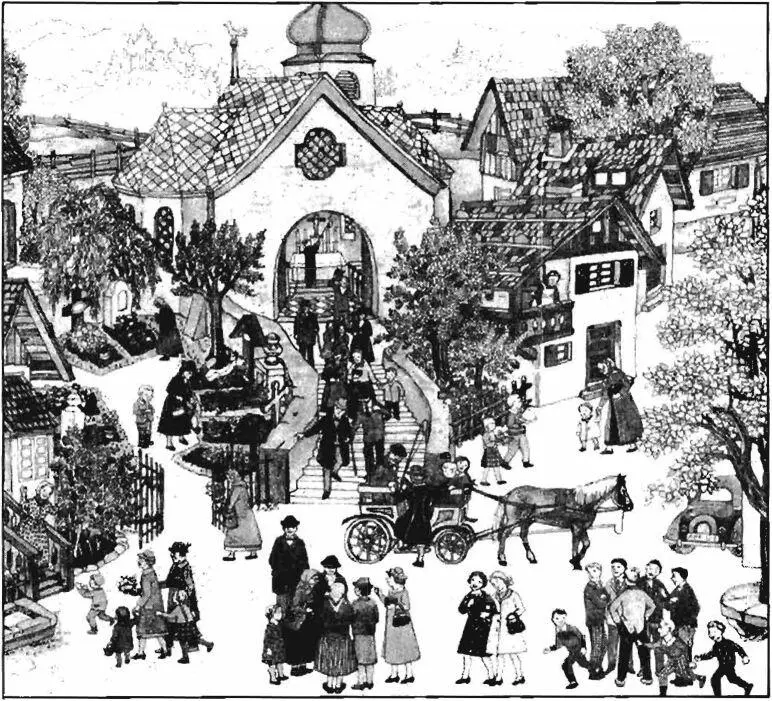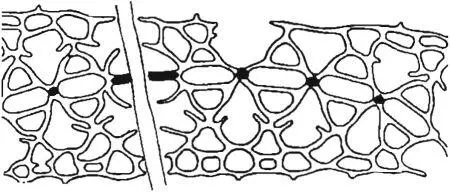Christopher alexander - A pattern language
Здесь есть возможность читать онлайн «Christopher alexander - A pattern language» весь текст электронной книги совершенно бесплатно (целиком полную версию без сокращений). В некоторых случаях можно слушать аудио, скачать через торрент в формате fb2 и присутствует краткое содержание. Жанр: Прочая научная литература, на английском языке. Описание произведения, (предисловие) а так же отзывы посетителей доступны на портале библиотеки ЛибКат.
- Название:A pattern language
- Автор:
- Жанр:
- Год:неизвестен
- ISBN:нет данных
- Рейтинг книги:3 / 5. Голосов: 1
-
Избранное:Добавить в избранное
- Отзывы:
-
Ваша оценка:
- 60
- 1
- 2
- 3
- 4
- 5
A pattern language: краткое содержание, описание и аннотация
Предлагаем к чтению аннотацию, описание, краткое содержание или предисловие (зависит от того, что написал сам автор книги «A pattern language»). Если вы не нашли необходимую информацию о книге — напишите в комментариях, мы постараемся отыскать её.
A pattern language — читать онлайн бесплатно полную книгу (весь текст) целиком
Ниже представлен текст книги, разбитый по страницам. Система сохранения места последней прочитанной страницы, позволяет с удобством читать онлайн бесплатно книгу «A pattern language», без необходимости каждый раз заново искать на чём Вы остановились. Поставьте закладку, и сможете в любой момент перейти на страницу, на которой закончили чтение.
Интервал:
Закладка:
10%
Ring 1 8N/-7tR 2
Ring 2 8N/37tR 2
Ring 3 8N/57tR 2
10. Once you have found the proper densities, from the formulae, write them on three slips of paper, and place these slips into their appropriate rings, on the game board.
it. The slips define a tentative density configuration for the community. Each ring has a certain typical distance from the center. And each ring has a density. Ask people to look carefully at the pictures which represent these densities, and then to decide which of the three rings gives them the best balance of quiet and green, as against access to shops. Ask each person to place his disk in the ring he chooses.
160
12. When all ten disks are on the board, this defines a new distribution of population. Probably, it is different from the one you started with. Now make up a new set of percentages, half-way between the one you originally defined, and the one which people’s disks define, and, again, round off the percentages to the nearest 10 per cent. Here is an example of the way you can get new percentages.
| Old percentages People’s disks New percentages | |||
|---|---|---|---|
| 10% | 3 _ 30% - | -> | 20% |
| 30% | 4 — 40% ■ | -> | 30% |
| 60% | 3 — 30% • | -> | 50% |
As you see, the new ones are not perfectly half-way between the other two—but as near as you can get, and still have multiples of ten.
13. Now go back to step 9, and go through 9, 10, it, 12 again and again, until the percentages defined by people’s disks are the same as the ones you defined for that round. If you turn these last stable percentages into densities, you have found the stable density configuration for this community. Stop, and have a drink all round.
In our experiments, we have found that this game reaches a stable state very quickly indeed. Ten people, in a few minutes, can define a stable density distribution. We have presented the results of one set of games in the table which follows below.
stable density distributions for
DIFFERENT SIZED COMMUNITIES
These figures are for semi-circular communities.
Density in families per gross acre
| Radius in blocks | Population in families | Ring 1 | Ring 2 | Ring 3 |
| 2 | 150 | 15 | 9 | 5 |
| 3 | 150 | 7 | 5 | 2 |
| 3 | 0O c<*> | 21 | 7 | 5 |
| 4 | 300 | 7 | 3 | 2 |
| 4 | 600 | 29 | 7 | 4 |
| 6 | 600 | 15 | 4 | 2 |
| 6 | I 200 | 36 | 9 | 3 |
| 9 | I 200 | 18 | 5 | 1 |
| 161 |
TOWNS
It is essential to recognize that the densities given in this table cannot wisely be used just as they stand. The figures will vary with the exact geometry of the neighborhood and with different cultural attitudes in different subcultures. For this reason, we consider it essential that the people of a given community, who want to apply this pattern, play the game themselves, in order to find a stable gradient of densities for their own situation. The numbers we have given above are more for the sake of illustration than anything else.
Therefore:
Once the nucleus of a community is clearly placed— define rings of decreasing local housing density around this nucleus. If you cannot avoid it, choose the densities from the foregoing table. But, much better, if you can possibly manage it, play the density rings game, to obtain these densities, from the intuitions of the very people who are going to live in the community.

Within the rings of density, encourage housing to take the form of housing clusters—self-governing cooperatives of 8 to 15 households, their physical size varying according to the density— house cluster(37). According to the densities in the different rings, build these houses as free-standing houses— house cluster(37), row houses(38), or higher density clusters of housing— housing hill(39). Keep public spaces— promenade(31), small public squares(61 )—to those areas which have a high enough density around them to keep them alive— pedestrian DENSITY(123). . . .
162
| 30 ACTIVITY NODES** |
|---|
 |
163
. . . this pattern forms those essential nodes of life which help to generate identifiable neighborhood(14), promenade(31),
NETWORK OF PATHS AND CARS (52), and PEDESTRIAN STREET
(100). To understand its action, imagine that a community and its boundary are growing under the influence of community of7000 (12), SUBCULTURE BOUNDARY ( I 3 ) , IDENTIFIABLE NEIGHBORHOOD (14), NEIGHBORHOOD BOUNDARY ( I 5), ECCENTRIC
nucleus(28), and density rings(29). As they grow, certain “stars” begin to form, where the most important paths meet. These stars are potentially the vital spots of a community. The growth of these stars and of the paths which form them need to be guided to form genuine community crossroads.
Community facilities scattered individually through the city do nothing for the life of the city.
One of the greatest problems in existing communities is the fact that the available public life in them is spread so thin that it has no impact on the community. It is not in any real sense available to the members of the community. Studies of pedestrian behavior make it clear that people seek out concentrations of other people, whenever they are available (for instance, Jan Gehl, “Mennesker til Fods (Pedestrians),” Arkitekten, No. 20, 1968).
To create these concentrations of people in a community, facilities must be grouped densely round very small public squares which can function as nodes—with all pedestrian movement in the community organized to pass through these nodes. Such nodes require four properties.
First, each node must draw together the main paths in the surrounding community. The major pedestrian paths should converge on the square, with minor paths funneling into the major ones, to create the basic star-shape of the pattern. This is much harder to do than one might imagine. To give an example of the difficulty which arises when we try to build this relationship into a town, we show the following plan—a scheme of
164
ours for housing in Peru—in which the paths are all convergent on a very small number of squares.
 |
| Public -paths converge on centers of action. |
This is not a very good plan—it is too stiff and formal. But it is possible to achieve the same relationship in a far more relaxed manner. In any case the relationship between paths, community facilities, and squares is vital and hard to achieve. It must be taken seriously, from the very outset, as a major feature of the city.
Читать дальшеИнтервал:
Закладка:
Похожие книги на «A pattern language»
Представляем Вашему вниманию похожие книги на «A pattern language» списком для выбора. Мы отобрали схожую по названию и смыслу литературу в надежде предоставить читателям больше вариантов отыскать новые, интересные, ещё непрочитанные произведения.
Обсуждение, отзывы о книге «A pattern language» и просто собственные мнения читателей. Оставьте ваши комментарии, напишите, что Вы думаете о произведении, его смысле или главных героях. Укажите что конкретно понравилось, а что нет, и почему Вы так считаете.












